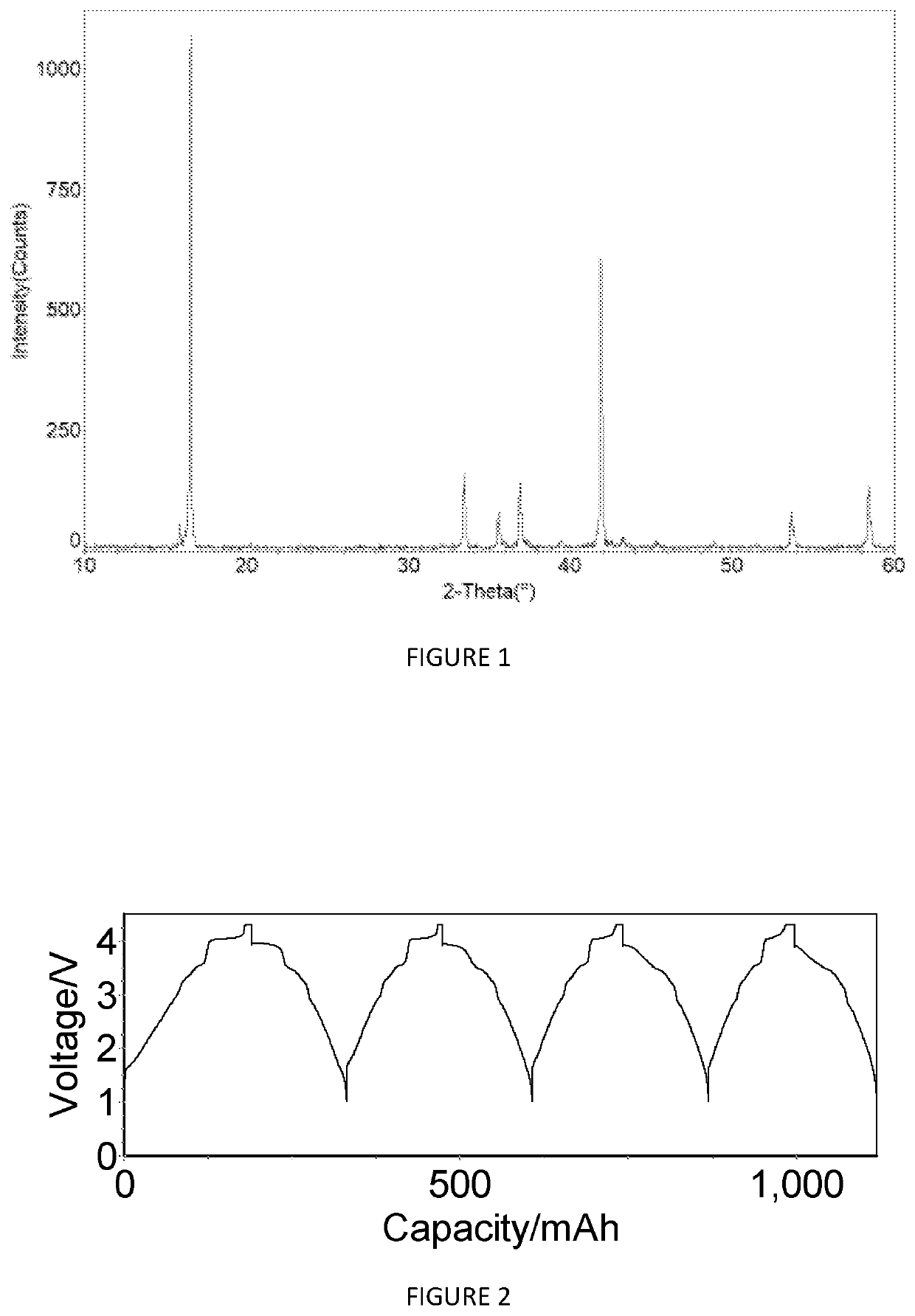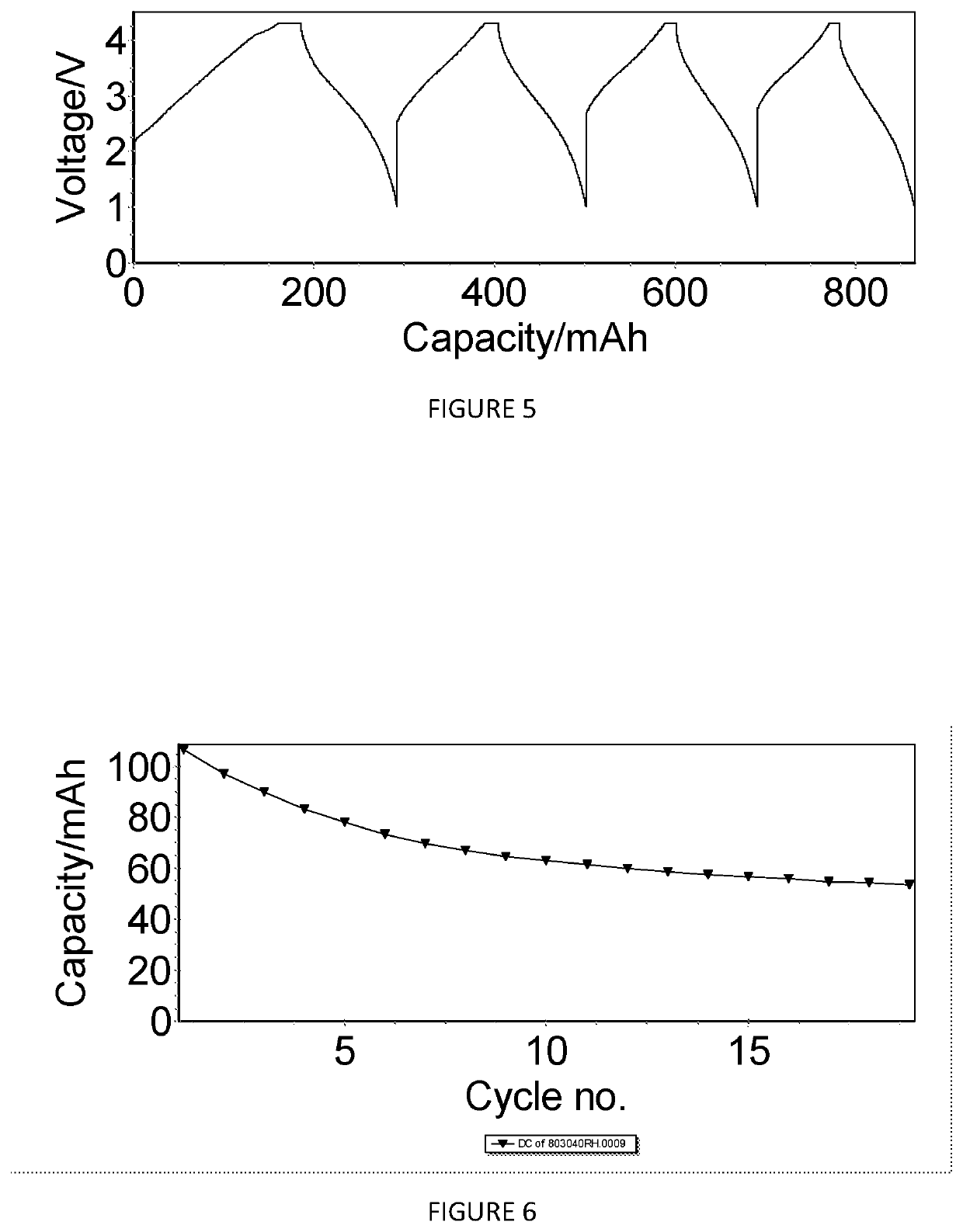O3/p2 mixed phase sodium-containing doped layered oxide materials
a technology of sodium-containing layered oxide and mixed phase sodium, which is applied in the direction of cell components, electrochemical generators, and nickel compounds, can solve the problems of not cheap lithium to source, is considered too expensive for large-scale applications, and a lot of work has yet to be done, so as to improve specific capacity and rate performance, high capacity, and high rate performance
- Summary
- Abstract
- Description
- Claims
- Application Information
AI Technical Summary
Benefits of technology
Problems solved by technology
Method used
Image
Examples
example 2
[0263]Na0.867Ni0.333Mn0.467Mg0.1Ti0.1O2 (Sample X2505)
[0264]FIG. 10 shows the X-ray diffraction pattern of the material Na0.867Ni0.333Mn0.467Mg0.1Ti0.1O2 (sample number X2505). The pattern shows that this material comprises a mixture of phases with a first phase with an O3-type structure and a second phase with a P2-type structure. The percentage amounts of the first and second phases were determined using Rietveld refinement.
[0265]The data shown in FIGS. 11 and 12 are derived from the constant current cycling data for an O3 / P2-Na0.867Ni0.333Mn0.467Mg0.1Ti0.1O2 cathode active material in a Na-ion cell (cell #608010 where this cathode material was coupled with a hard carbon anode material. The electrolyte used was a solution of 0.5 M NaPF6 in a mixture of ethylene carbonate (EC), propylene carbonate (PC) and diethyl carbonate (DEC). The constant current data were collected at an approximate current density of 0.25 mA / cm2 between voltage limits of 1.00 and 4.3 V. To ensure that the Na...
example 4
[0268]Na0.867Ni0.333Mn0.467Mg0.1Ti0.1O2 (Sample X2506)
[0269]FIG. 13 shows the X-ray diffraction pattern of the material Na0.867Ni0.333Mn0.467Mg0.1Ti0.1O2 (sample number X2506). The pattern shows that this material comprises a mixture of phases with a first phase with an O3-type structure and a second phase with a P2-type structure. The percentage amounts of the first and second phases were determined using Rietveld refinement.
[0270]The data shown in FIGS. 14 and 15 are derived from the constant current cycling data for an O3 / P2-Na0.867Ni0.333Mn0.467Mg0.1Ti0.1O2 cathode active material in a Na-ion cell (cell #608011) where this cathode material was coupled with a hard carbon anode material. The electrolyte used was a solution of 0.5 M NaPF6 in a mixture of ethylene carbonate (EC), propylene carbonate (PC) and diethyl carbonate (DEC). The constant current data were collected at an approximate current density of 0.25 mA / cm2 between voltage limits of 1.00 and 4.3 V. To ensure that the N...
example 8
[0273]Na0.833Ni0.317Mn0.467Mg0.1Ti0.117O2 (Sample X2663)
[0274]FIG. 16 shows the X-ray diffraction pattern of the material Na0.833Ni0.317Mn0.467Mg0.1Ti0.117O2 (sample number X2663). The pattern shows that this material comprises a mixture of phases with a first phase with an O3-type structure and a second phase with a P2-type structure. The percentage amounts of the first and second phases were determined from these structural data.
[0275]The data shown in FIGS. 17 and 18 are derived from the constant current cycling data for an O3 / P2-Na0.833Ni0.317Mn0.467Mg0.1Ti0.117O2 cathode active material in a Na-ion cell (cell #706006) where this cathode material was coupled with a hard carbon anode material. The electrolyte used was a solution of 0.5 M NaPF6 in a mixture of ethylene carbonate (EC), propylene carbonate (PC) and diethyl carbonate (DEC). The constant current data were collected at an approximate current density of 0.25 mA / cm2 between voltage limits of 1.00 and 4.3 V. To ensure tha...
PUM
| Property | Measurement | Unit |
|---|---|---|
| temperature | aaaaa | aaaaa |
| charge | aaaaa | aaaaa |
| structures | aaaaa | aaaaa |
Abstract
Description
Claims
Application Information
 Login to View More
Login to View More - R&D
- Intellectual Property
- Life Sciences
- Materials
- Tech Scout
- Unparalleled Data Quality
- Higher Quality Content
- 60% Fewer Hallucinations
Browse by: Latest US Patents, China's latest patents, Technical Efficacy Thesaurus, Application Domain, Technology Topic, Popular Technical Reports.
© 2025 PatSnap. All rights reserved.Legal|Privacy policy|Modern Slavery Act Transparency Statement|Sitemap|About US| Contact US: help@patsnap.com



